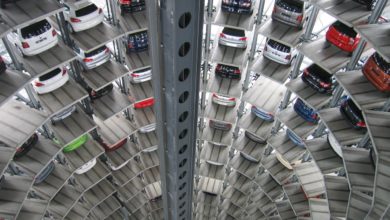Smart Home Insights: Do They Really Help Reduce Your Energy Usage?

Saving energy is a steadily growing issue these days, not only for the sake of our environment but also for also reducing monthly utility expenses as well. You would think that to reduce your energy usage at home, it would be as simple as using less, but the reality is that it’s not that simple.
Yes, you can turn off the lights when you leave one room and enter another, you can keep the oven door closed when baking, and you can unplug all appliances and electronics when you’re not using them, but that’s a tedious act to perform on a daily basis… There has to be some kind of way to streamline and reduce our energy usage on a daily basis that isn’t so taxing on our normal daily routine…
Well, the solution is smart home systems and devices. Smart home systems and devices allow users to monitor and control energy use in their homes in more technologically advanced ways. Studies by the Fraunhofer Institute reveal that smart home systems can save users as much as 40% on heating costs, and those savings are very beneficial if you live in an area with harsh winter temperatures.
But in order for a smart home to truly be beneficial to your budget and reduce your energy usage, you’re first going to have to go back to the brick-and-mortar of it all first.
Back to the Basics of Brick-and-Mortar
If your home was built 40 to 50 years ago, you more than likely have small cracks and openings around your doors and windows that will need sealing. The sealing of these cracks is what’s going to make a major difference in your energy expenses. But it’s not until cracks are sealed that smart home systems will reduce your energy usage.
Now, the next consideration to factor in before jumping right into smart home systems and devices is to look at your actual energy provider. The second part of optimizing your smart home systems and devices is to make sure your energy provider is giving you the best rate possible.
Are You Getting the Best Rate From Your Energy Provider?
When you first bought your house or moved into your rental, were you able to shop around for lower electric rates? Probably not, and it’s probably because you don’t live in a deregulated state. Deregulation allows residents to shop for the best electricity plan to meet their energy needs.
This is an option that’s only available in certain states, though. If you live in Texas, you can shop around for the best electric rates in Texas. So this will require you to do a bit of research to see if your state is deregulated, and if it is, you can benefit even more from smart home systems and devices in your home.
Once you’ve sealed any and all cracks in your home, and found the best utility provider for your energy needs, you can then start using your smart home systems and devices efficiently and benefit from your savings over time.
How Smart Home Systems and Devices Impact Your Energy Usage
“Set It and Forget It”: The Power of Smart Thermostats
When it comes to electric energy management, your air conditioning and heating system accounts for nearly 48% of your home’s energy expenses. Your heating and cooling costs are likely where you’ll see the biggest financial impact by investing in a smart thermostat.
The biggest perk of a smart thermostat is the ability to set it and forget it. All too often, whether it’s the hot summer months or cold winter months, we’ll leave the heating and AC off while we’re gone, and when we come home, turn the system drastically high or low in an effort to heat or cool our homes fast. The only problem with that is that it not only doesn’t heat or cool our home any faster but it also costs more money doing that.
With a smart thermostat, you’ll be able to keep a consistent comfortable temperature in your home and you’ll be able to save around $20, give or take, on your monthly utility bills.
Reduce Phantom Loads: Energy-Efficient Appliances, Electronics, and Gadgets
Did you know that your electronics, appliances, and gadgets, if left plugged in, use electricity even when you’re not using them? This is called a “phantom load” or “vampire power.” Even if those electronics are powered down or in sleep mode, it can still cost you as much as $200 annually.
That may not sound like much to you because it’s a few dollars per month added to your bill, but nationwide, that adds up to millions of dollars worth of energy wasted. With smart appliances, electronics, and gadgets, if left plugged in, will only add a few cents to your bill.
There are many more smart systems and devices that will positively impact your energy usage. The two listed above are the most prevalent. Take the time out to see what technologies are out there to meet your home’s energy needs so you can enjoy the savings over time.



